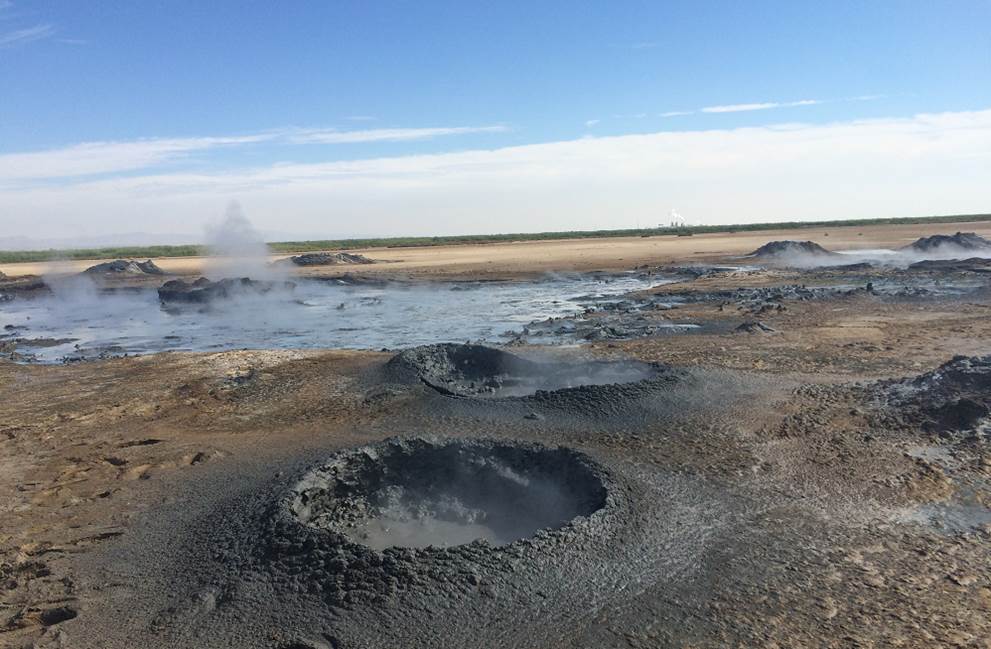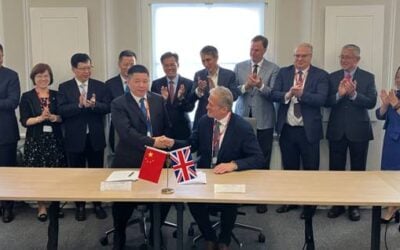
President Joe Biden’s recent invocation of the Defense Production Act of 1950 could help to solve supply chain issues for the battery storage industry, but only over the longer term.
That’s according to a number of sources Energy-Storage.news has spoked to since the decision was announced at the beginning of this month. The president called on the Cold War-era legislation, which will authorise federal government support for production and processing of minerals and materials used for batteries in electric vehicles (EVs) and stationary battery energy storage systems (BESS).
Enjoy 12 months of exclusive analysis
- Regular insight and analysis of the industry’s biggest developments
- In-depth interviews with the industry’s leading figures
- Annual digital subscription to the PV Tech Power journal
- Discounts on Solar Media’s portfolio of events, in-person and virtual
“We certainly welcome President Biden’s effort to invoke the Defense Production Act Title III to help secure the domestic production of batteries that is clearly in our national interest,” Dr Francis Wang, CEO of Nanograf told Energy-Storage.news.
Nanograf is a US startup which is developing silicon anodes for lithium batteries which could be a higher energy density replacement for graphite which is typically used today. The company is working to perfect its technology, which it claims could overcome challenges limiting the use of silicon that have prevented others from commercialising it.
“Lithium-ion innovation began in the United States but was slowly outsourced over the past few decades and America has fallen behind in terms of high-volume, high-quality battery production. Almost all the key components of the battery supply chain are sourced from abroad,” Wang said.
The dilemma is however neither “easy nor cheap to solve,” Wang said, adding that investments enabled by the Defense Production Act could be “key to helping the US secure access to materials and onshoring production capacity,” reducing the country’s dependence on foreign imports, which comprise the vast majority of the supply chain today. Back in 2020, Wang had commented that the COVID-19 pandemic threw into stark relief the US’ dependency on imports for the battery industry, particularly from China.
‘Problem is here now, not five years down the road’
Biden’s use of the act comes as a result of both long and short-term market challenges for the battery supply chain in America which have been well documented. Joseph Johnson, market intelligence manager at Clean Energy Associates, a technical advisory which analyses solar PV and energy storage industry trends, noted that it follows a review of the critical minerals supply chain which Biden ordered as he entered office.
This began as a 100-day review to identify immediate actions to be taken, as well as a year-long review, which concluded a couple of months ago.
“The US has identified it has a deficit or a lack of that lithium-ion ecosystem production, kind of stemming upstream. Where the minerals are produced is one key issue and then looking beyond that, a lot of the refining operations also don’t take place domestically in the US, a lot of material is then imported, still from Asia, largely for any sort of US cell manufacturing needs — which are slowly growing with those big automakers pairing with partner cell producers,” Johnson said.
“So this act is to then spur more investment, more attention and more protections for these ore producers looking at setting up operations or mineral extraction inside the US.”
Danny Lu, executive VP of US energy storage manufacturer and system integrator Powin Energy, said that the Defense Act’s use, as well as other efforts being taken by the Biden-Harris Administration and energy secretary Jennifer Granholm’s Department of Energy are positive developments in localising production and securing the US battery supply chain.
However, Lu said it does not solve the near term issues of the industry. There need to be more government grants, tax credits and benefits for companies to move factories into the US and set up federal programmes, as opposed to the state-level programmes that most are relying on, according to the Powin VP.
Establishing battery manufacturing facilities can be done relatively quickly, perhaps a couple to three years from permitting to the start of production. Solving the minerals supply question poses longer-term problems.
“If you’re talking about starting from the mining of the material to the processing, all from scratch, I don’t think that’s solving a two to three year problem. I think that’s that’s trying to solve a 10 to 20 year problem,” Lu said.
Before that can happen, there needs to be “an environment and policy in place to actually promote the growth of the energy storage market and not to try and bundle up energy storage batteries with EV batteries that are produced in the US”.
Demand for batteries is rapidly increasing and supply has not been able to keep up, Nanograf’s Dr Francis Wang notes, and supply chain issues for the battery industry “are quite severe and will likely get even worse,” with a big mismatch between the large numbers of gigafactories to produce batteries coming online around the world versus the availability of capacity to mine raw materials.
As Danny Lu notes, the problems are even more severe for energy storage, since cell providers are generally prioritising their EV customers, which buy much bigger volumes of battery products than BESS companies do. With BESS more commonly being built with lithium iron phosphate (LFP) cells, only about a gigawatt of LFP production facilities exist in the US today.
Caspar Rawles, chief data officer at lithium-ion battery supply chain information provider Benchmark Mineral Intelligence, said that it isn’t yet clear what forms of support will be created by the Defense Production Act.
It did signal an intent to solve the supply chain issues and theoretically could have a positive impact on domestic raw material production in the US, Rawles said. However, a key omission was that the government has said it will not intervene to expedite permitting of new extraction facilities, which would be “the key step”.
“That permitting process can really hinder the speed at which new supply can come online. What you want to see is actually some action rather than just words. I’m not saying they don’t intend to do anything about it [the supply chain] but it really needs to accelerate things because the problem is here now — it’s not five years down the road, it’s here today and it’s going to continue to grow from here,” Rawles said.






